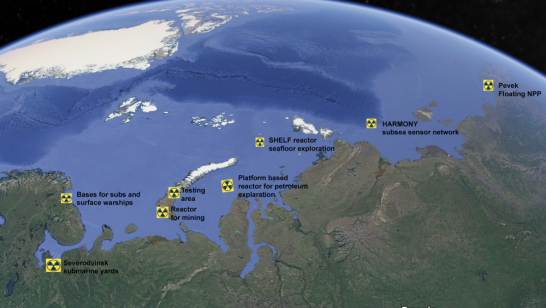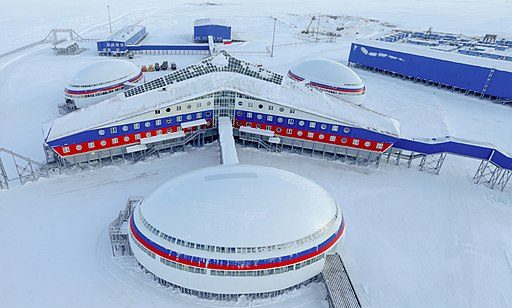
In July 2020, the European Commission and European External Action Service launched a public consultation on the European Union’s (EU) next Arctic policy, which closed on November 10, 2020. The EU’s last Arctic Policy was published in April 2016 – almost five years ago. Since then, much has changed in the High North. Climate change is acting as a catalyst for a geopolitical transition that is transforming the actual geography of the region with severe consequences for the food and water security of Indigenous People who live there. The United States and Russia are also ramping up Arctic security narratives that may open the region up to the pressures of geopolitical competition. In response to these factors, the EU is updating its Arctic policy to better deal with the problems of today. The EU’s preference for a human security approach, and a strong focus on a greener future, can make it a valuable counterweight to the growing superpower competition in, and militarization of, the Arctic.
Why Europe’s next Arctic policy matters
The Arctic has traditionally been of second-order importance to the EU’s foreign policy and funding programmes. However, it is rising up the agenda as climate change presents an increasingly urgent collective action problem that requires immediate attention. As a fragile ecosystem so far north, the Arctic is uniquely susceptible to climate change, with severe consequences both for locals and for the planet. Moreover, the EU is a critical consumer of Arctic gas, oil, and fish.
Alongside the broader problems of climate change and food and water scarcity, the United States, Russia, and China have all signalled an intent to project influence in the region. While China ostensibly has claimed its interest is purely economic, the United States and Russia have both released statements that indicate their concerns are political. The United States claims that Russia is militarizing the region, pointing to the reopening of military bases and increased overflights by Russian aircraft. In response, Russia has stated that the United States wants to restrict Russia’s growth by infringing on its sovereign right to project power within the Northern Sea Route, which runs along the Russian Arctic coast from the Kara Sea to the Bering Strait and it considers in its entirety as its territory but which is viewed by most other countries as an international waterway. While direct military engagement appears unlikely, all of these actions may raise tensions.
The EU’s next Arctic Policy aims to address these issues, focusing heavily on climate change and environmental protection but also, as High Representative of the EU Josep Borrell has stated, to “ensure that the Arctic remains a zone of low tension and peaceful cooperation, where issues are solved through constructive dialogue.”
What Europe’s human security tradition offers
The concept of human security was institutionalized within the EU’s framework for human rights and foreign policy from 2003-2008. While the term has been deprioritized in recent years, ideas from the EU’s human security past can and should be applied to the new Arctic Policy. By doing so, the EU can lead by example in a region that is growing in importance both politically and environmentally. First, human security offers a more nuanced understanding of security and threats by bringing the focus away from the state and towards the individual, community, and environment. While a traditional security approach focuses on risks such as state-vs-state conflict between the United States, Russia, and China, a human security approach looks at the broader question of how climate change is endangering the individual security of Indigenous People in the Arctic by limiting their access to food and water. This approach will help the EU better formulate a policy that addresses the security of Indigenous People and other locals while also taking into account the multifaceted interaction of international, regional, and local actors. The EU also has an important normative role to play to change the international narrative around Arctic security to take account of the increasingly urgent effects of climate change
Human security also expands the scope of security to other areas beyond war and state-versus-state violence: climate change, the environment, energy, communities and governance, amongst others. All of these are highly relevant to the challenges facing the Arctic today. Any new EU Arctic policy should use a more holistic approach, acknowledging that many issue areas in the Arctic are interconnected, especially given the inherent fragility of its unique ecosystem. For insecurity in the Arctic is interconnected with food security and water security, not only for Indigenous People in the Arctic but also for Europe. The adoption of a human security lens in the Arctic should help bring attention to the needs of Indigenous People, which are being neglected amid traditional security discourse and can help move the discussion beyond zero-sum competition to protect an area that is vital for the future of the planet.
What the European Green Deal offers
A new EU Arctic Policy should also be joined up with the European Green Deal, a series of policies from the European Commission that aims to make the EU climate neutral by 2050, by moving to a clean, circular economy. The Green Deal is notable for its inclusive and comprehensive approach. Rather than focusing on solely one issue such as biodiversity, the Green Deal also explores the implementation of a sustainable food system, sustainability in agriculture, clean energy, sustainable industry, a clean construction and transport sector, eliminating pollution and a variety of other issue areas that all have an impact on emissions. The Green Deal is already being implemented in three Arctic states, which are also EU members (Denmark, Sweden and Finland).
In a new Arctic Policy, the EU can and should adopt a similar inclusive approach that does not claim that solving one problem will be enough. Instead, the new Arctic Policy should provide support for Green Deal policies that are relevant to the Arctic, such as sustainable food systems and a clean industrial sector, as well as other problems that are more Arctic specific such as the emergence of new waterways, questions of Search and Rescue operations, and cooperation with other states.
Looking forward
As the EU updates its Arctic Policy, the bloc should take the opportunity to act as a normative power and lead the way forward in countering dangerous narratives that oversimplify the Arctic as a theatre of great power competition. The European Green Deal can act as a model for the new Arctic Policy in adopting a more inclusive approach that leans into complexity rather than simplicity. This much-needed human security lens can better counter the growing trend of seeing the Arctic as the new arena of the Cold War and as the stage for a race for resources.
This is not to say that there are not some limitations on the EU’s Arctic Policy. For example, the policy will apply to three Arctic states – Denmark, Finland, and Sweden – and will not cover the other five Arctic states – Russia, the US, Canada, Norway, and Iceland. However, this at least represents a starting point for Europe, and it can use its influence to lead by example. Further, some Arctic experts such as Andreas Raspotnik argue that the EU policy should not engage in security questions in order to avoid raising tensions and that it’s difficult for the EU to develop a coherent EU-Arctic narrative because, while climate change is certainly an area where the EU leads globally, it is not an issue that can be solved purely by an Arctic Policy. Thus, if climate change cannot be the axis of the EU’s policy, what alternatives are there? Nonetheless, the EU’s role as a global climate leader and proponent of human security presents some positive opportunities for leadership on a holistic approach to Arctic security.
The opinions articulated above represent the views of the author(s), and do not necessarily reflect the position of the European Leadership Network or any of its members. The ELN’s aim is to encourage debates that will help develop Europe’s capacity to address the pressing foreign, defence, and security policy challenges of our time.
Image: Flickr, NASA/GSFC/Jeff Schmaltz/MODIS Land Rapid Response Team



